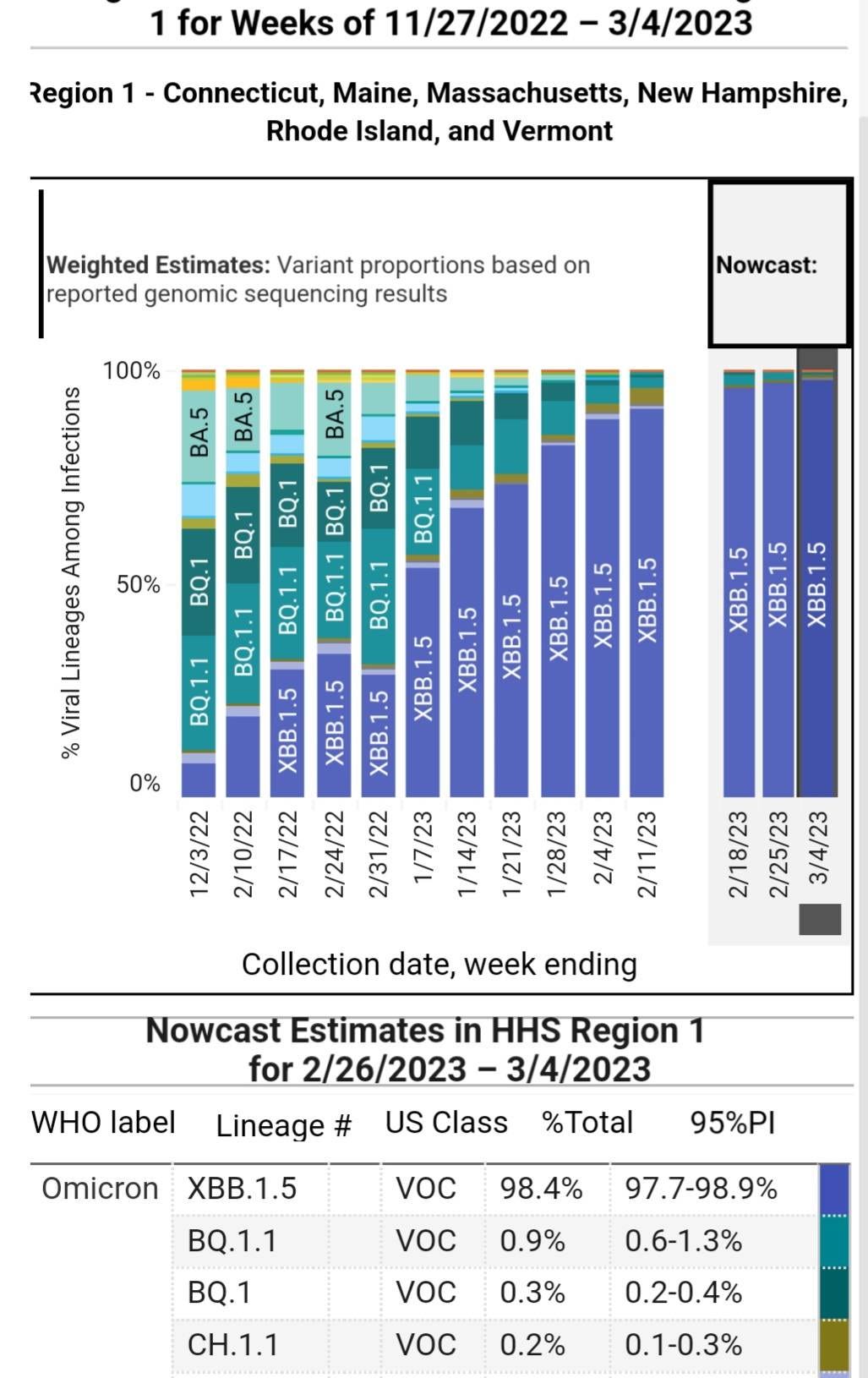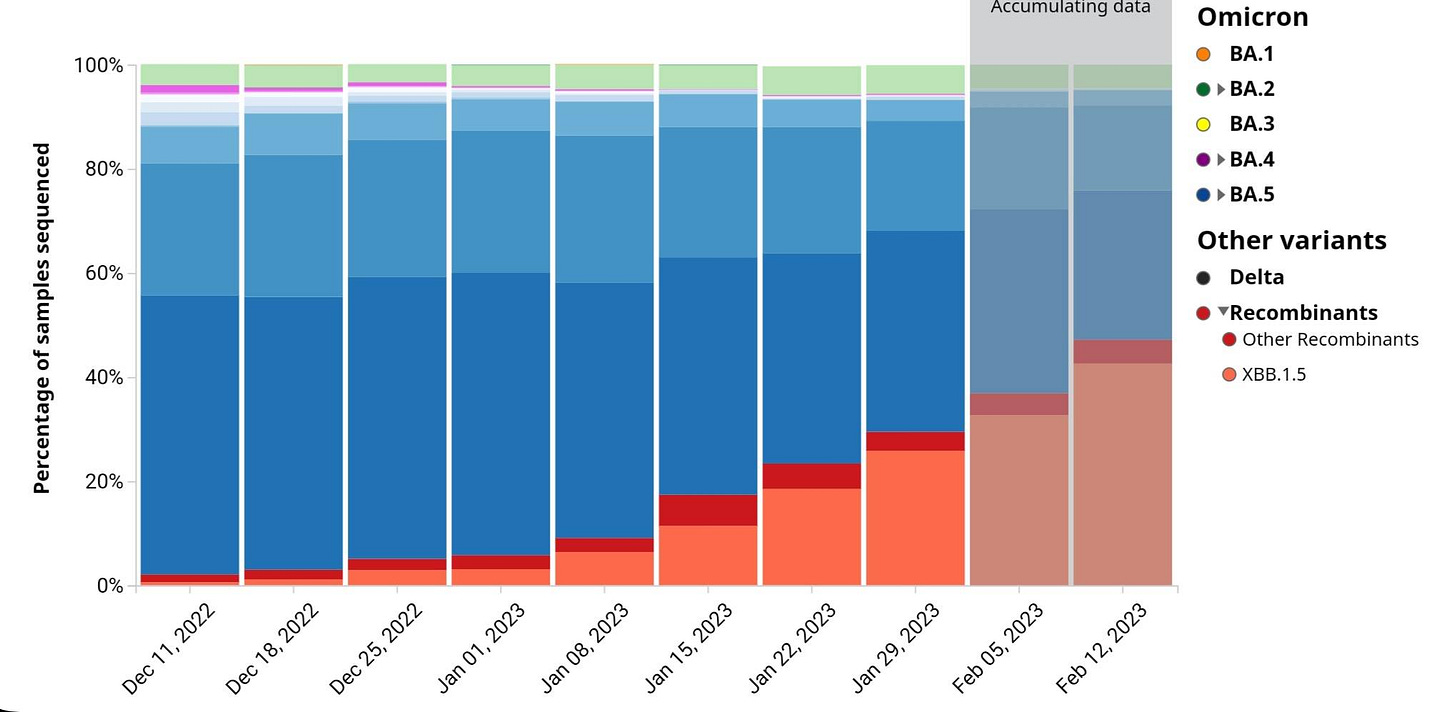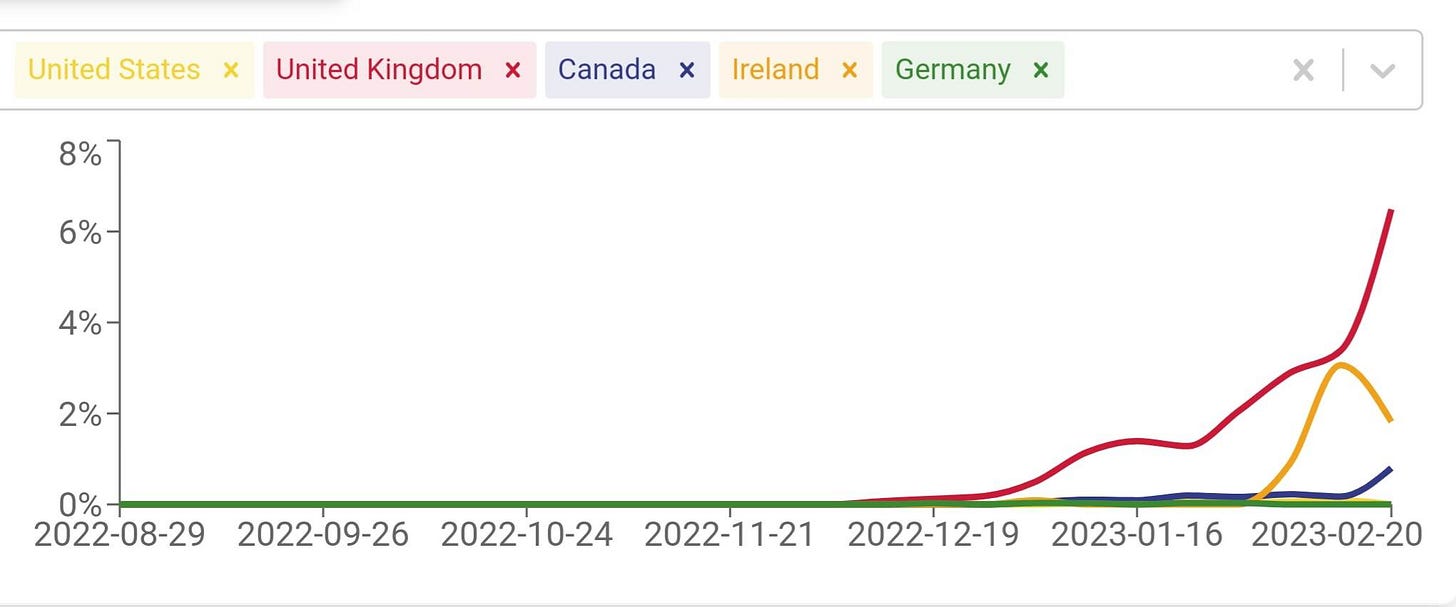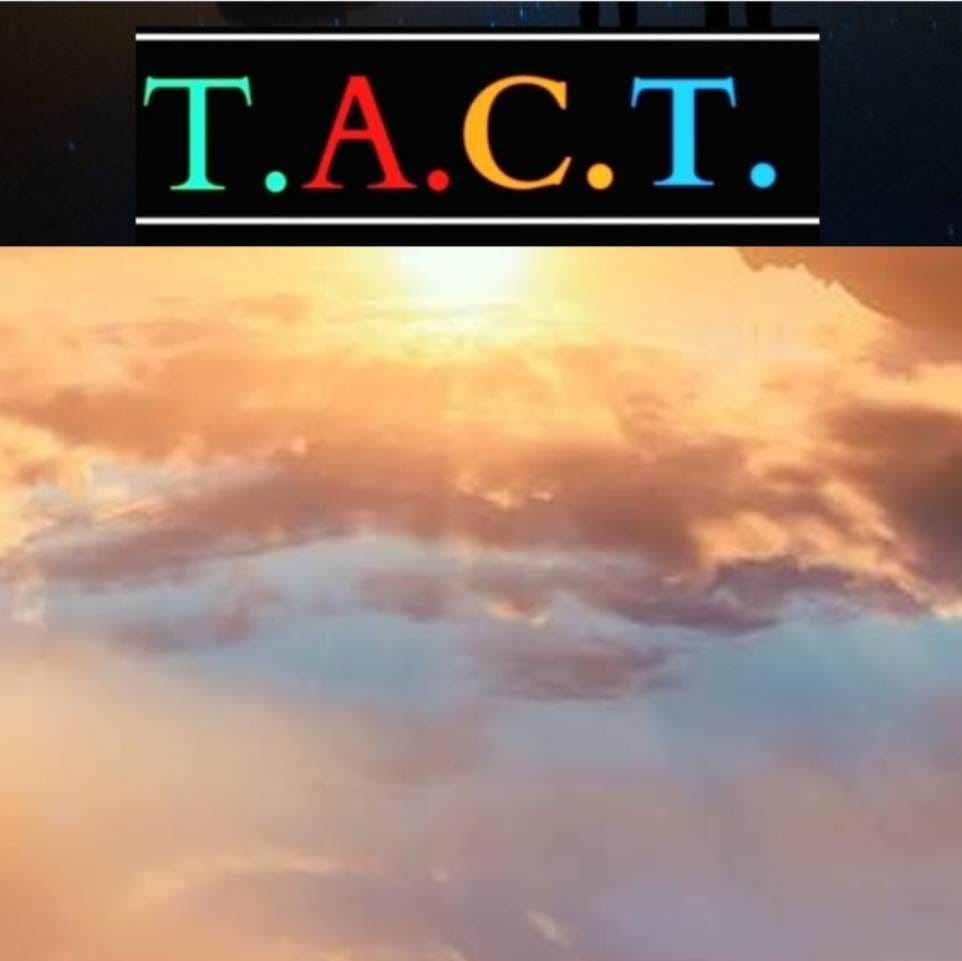COVID Variants Update: XBB.1.5 is over 89% of cases in the U.S./ XBB.1.5 has spawned over 20 sub-variants, many with new advantages
XBB.1.5: The Insidious Beast
XBB.1.5 looks as if it has crushed the competition, but as usual, the CDC and other countries variant proportions, don’t show the whole picture. There are now over 20 sub-variants of XBB.1.5. There are a couple that we have shown in prior updates, and there are some new variants that have impressive growth advantages over XBB.1.5. They are already in the U.S., Canada, Germany, and other countries. We will share a few of them, but it is too early to say which one will break out or how it may impact our health. We will be keeping a close eye on them and sharing more information as it becomes available.
XBB.1.5 is the most antibody-evading variant to date, defeating all available monoclonal antibody treatments, and reducing the efficacy of vaccines and other treatments. After XBB.1.5, the biggest growth advantages will likely be ways to further weaken the immune system and/or bind to our cells even better. Neither are good for people.
XBB.1.5: 98.4% of cases in the Northeast U.S.
The national prevalence of XBB.1.5 is 89.6% of all sequenced cases.
The Situation Simplified: XBB.1.5, Five Things to Know
1. XBB.1.5 infections with fewer symptoms or no symptoms may not necessarily carry fewer risks. XBB.1.5 may increase the risks.
2. With mild symptoms or without any symptoms, everyone is susceptible to multi-organ persistence and dysfunction.
3. Antibodies from prior infections and/or vaccines don't block the XBB variants. Anyone can be infected.
4. COVID can infect many different types of immune cells, killing them off and making the immune system weaker for weeks or months.
5. The more viral particles inhaled, the greater the number of cells that will have to die, and the greater the odds of multi-organ infection and persistence.
XBB.1.5 is an insidious beast because it is capable of infecting people with much greater ease, evading and suppressing the immune system for weeks or months, and causing fewer symptoms in many people while moving in to its new home and persisting in viral reservoirs throughout the body. This makes it easier for chronic conditions to develop. This is already happening in millions of people and will affect more and more as time goes on.
Canada's variant proportions through February 12 2023
XBB.1.5 is likely much more prevalent by now. The worst part is that they just updated this.
In England variant proportions through February 7th, below. XBB.1.5 has more competition but XBB.1.5 sub-variants are gaining more advantages.

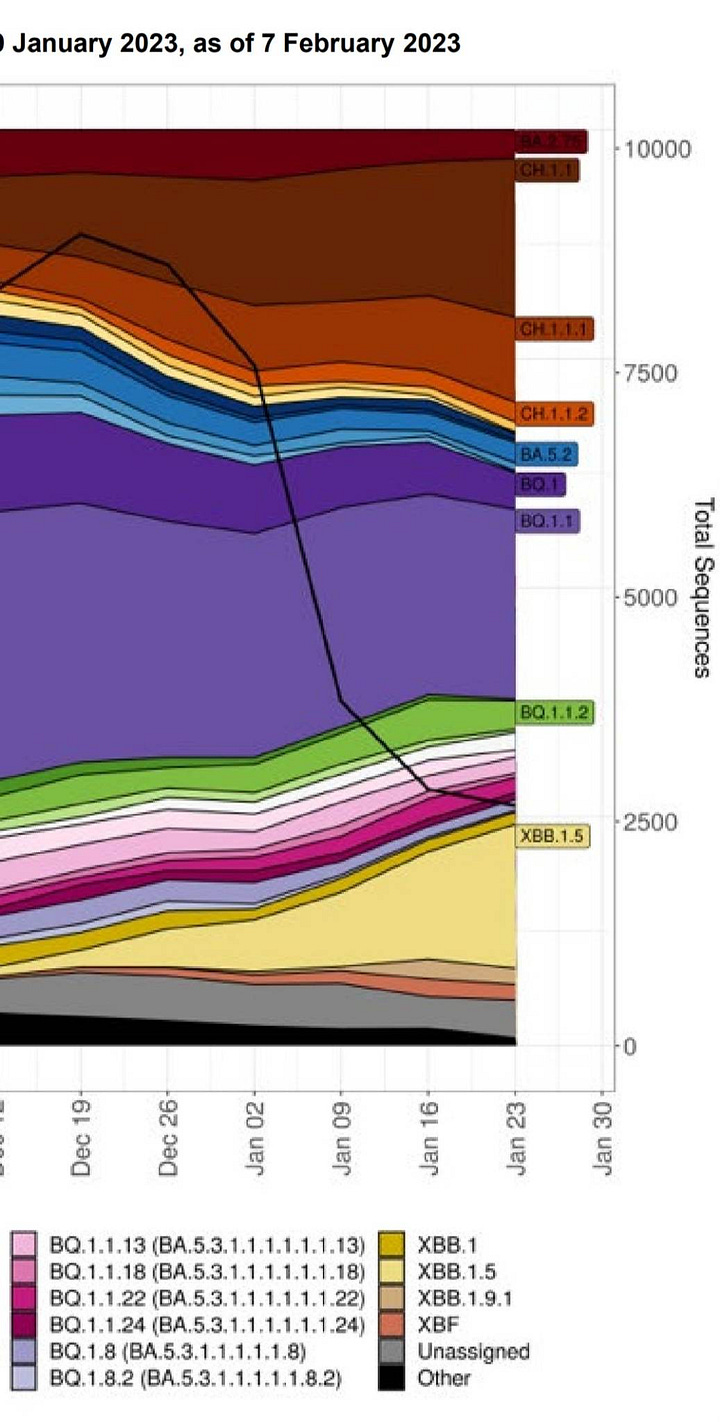
XBB.1.5 Sub-variants and other notable variants on the watch list.
XBB.1.5.10 has expanded out of North Carolina and South Carolina into Georgia, Tennessee, and Florida. It has an estimated 26% growth advantage over XBB.1.5.
XBB.1.5.12, pictured below, has an estimated 26% growth advantage over XBB.1.5. It’s taking hold in Germany and has been sequenced the most in children 10–19 years old.

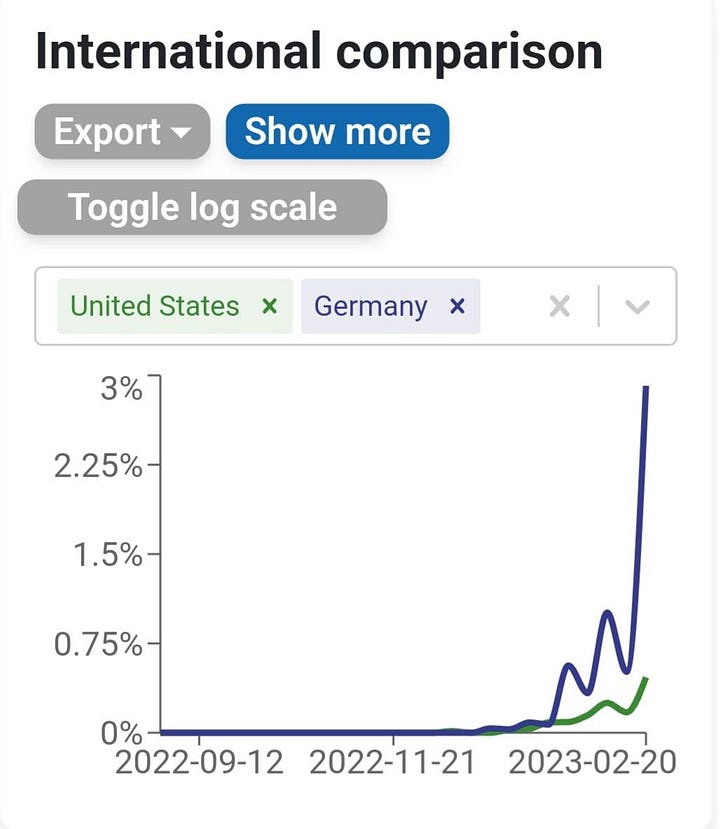
XBB.1.5.18 is taking hold in the United Kingdom and Canada. Ireland’s decline may be due to lack of sequencing because it has 20% growth advantage over XBB.1.5
EK.2 (XBB.1.5.13.2) is predominantly spreading in the U.S., with a 59% growth advantage over XBB.1.5. A concerning point about this variant is that it has another mutation added to the N-protein, likely impacting its interaction with T cells. Selective pressure is driving this, and it is likely to occur with greater frequency going forward. This is not good.
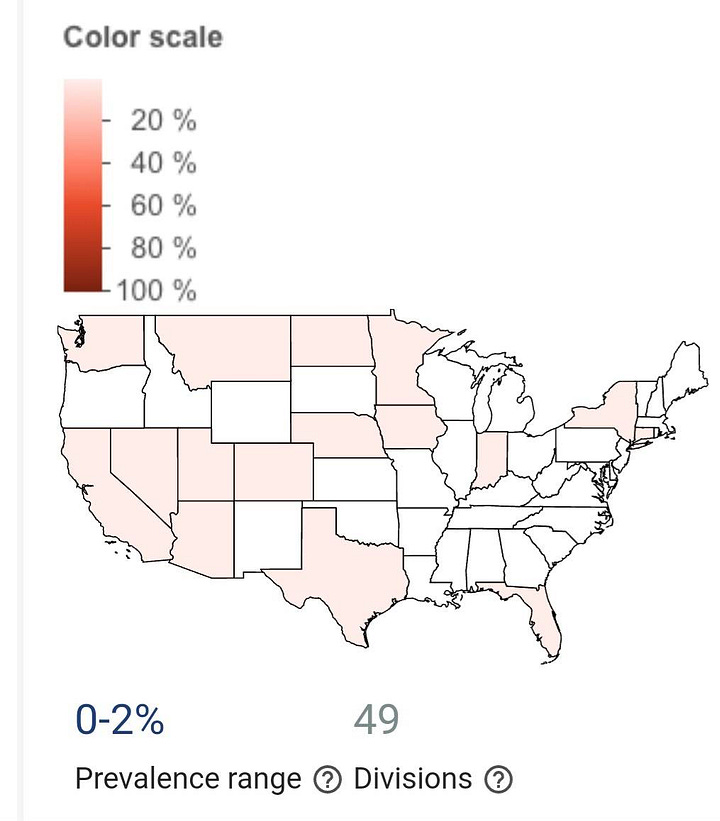
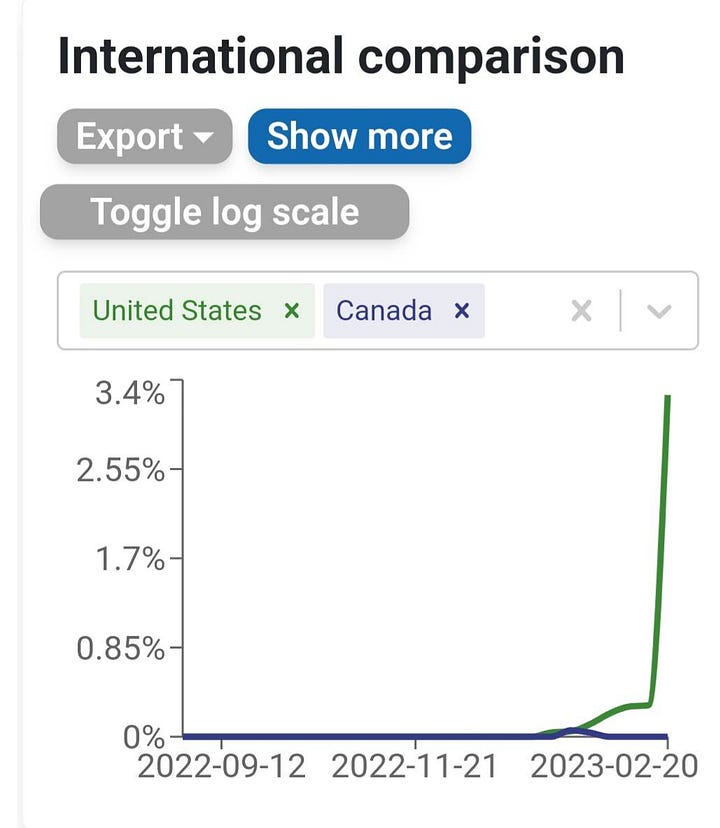
XBB.1.9.1 has continued to expand with its 54% growth advantage over XBB.1.5


As we can see, COVID has been busy evolving, while the majority of people have done their best to ignore it. Ignoring it just gives the virus the advantage, and it will take every advantage we provide it.
The more often persistent infections occur, the more time and chances COVID will have to evolve around treatments and vaccines, making it harder for our immune systems to stop it. Two years ago, on March 4, T.A.C.T. warned that the vaccine would become less effective as the virus evolved if we didn't stop it from spreading while vaccinating. Now, two years later, vaccines don't stop infections or stop the virus from getting into our organs and staying there. We don’t have new boosters lined up. We were told it would be easy to update vaccines, but that hasn’t proven true. The vaccine's efficacy against hospitalization is declining. There aren’t any monoclonal antibody treatments available. The virus is continuing on its warpath, killing thousands of people every week in the U.S. and around the world.
If we allow COVID to continue on this path, there is a good chance that it will evolve to further deteriorate our last line of defense, T-cells. Put another way, the last line of defense is likely to be further defeated if we do not do anything to prevent transmission. This will likely lead to a greater frequency of chronic conditions, disability, and death. We know how to stop this from happening; we have the tools to stop it from happening; however, far too many people are not even trying. The time to act is now. At the very least, we can protect ourselves and our families as long as we know what’s going on.
T.A.C.T. has been published on Substack for 3 months and is being read in 45 U.S. states and 44 countries around the world. We want to thank everyone who reads T.A.C.T. on Substack for their support and continued interest in the latest science and data. COVID has no concept of borders. This is impacting everyone around the world. It takes a global perspective to understand what is happening and to change the trajectory of the unsustainable path we are on.
We have an opportunity to use the cumulative science, data, and technology to provide a healthier future for ourselves, our children, and future generations, but we must invest the resources necessary to make this happen. This won’t happen without advocacy.
T.A.C.T. is reporting the latest science, data, and analysis in order to achieve a sustainable path forward.
Please share your thoughts, insights, questions, and/or experiences so that we can learn from each other.





